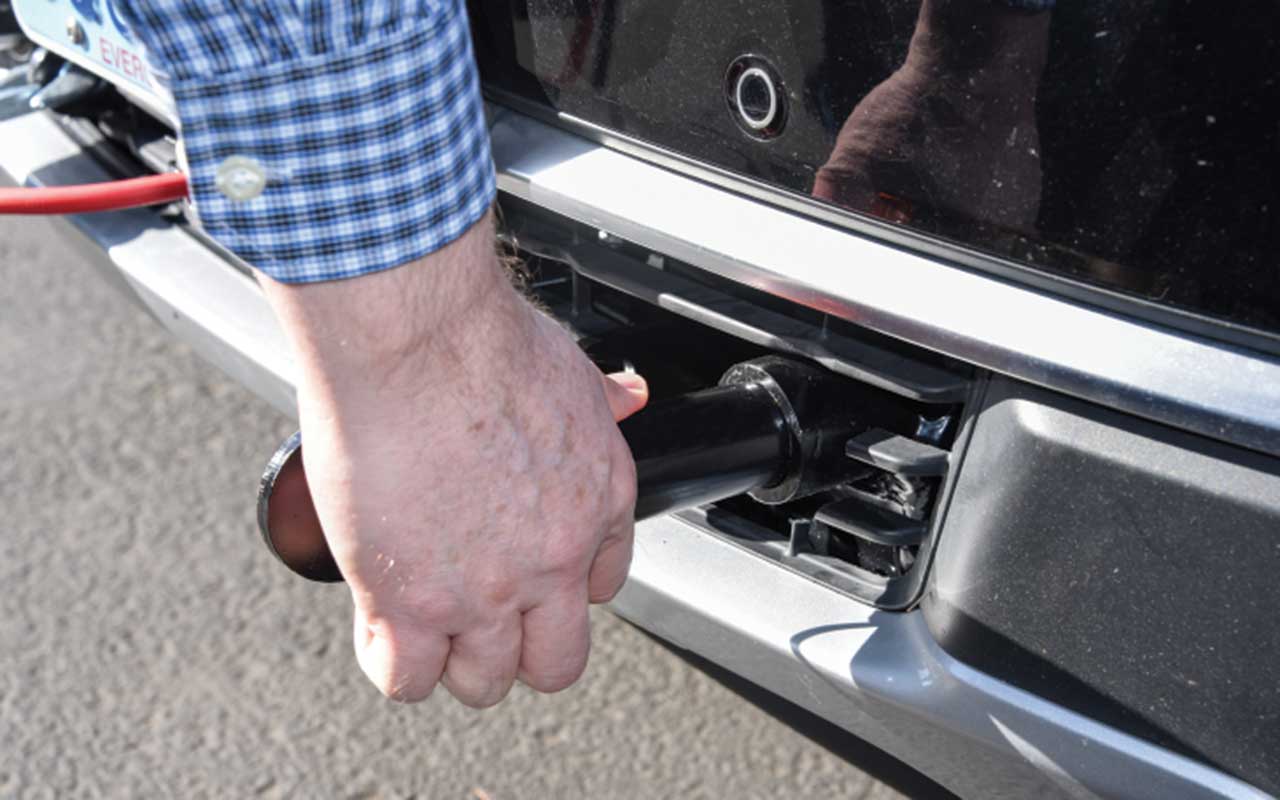Get ready for worry-free dinghy towing by creating your own preflight checklist.
Pilots complete a preflight checklist before each takeoff to ensure that all equipment on the plane is working properly. Forgetting to do so can have disastrous consequences, up to and including a crash that could injure or kill the pilot and passengers.
Thankfully, forgetting to do something before traveling in your motorhome probably won’t be quite as life-threatening, but it could certainly lead to an accident and/or damage that puts a halt to your travel plans. This is especially true when dinghy towing, as there are nearly double the tasks to complete before departing for your next destination.
“Your preflight checklist should be specific to your own setup,” said David Robinson, vice president of Roadmaster. “Figure out all the things you have to do, specifically and generally. Create and modify your own list; if you don’t have one, you will eventually forget to do something.”

Before any long trip, it’s a good idea to check to make sure the baseplate is securely tightened. Grab the arms that insert into the baseplate and pull up/push down vigorously. Some play where the arm goes into the baseplate socket is normal, but if any other part of the assembly feels loose, make sure the baseplate mounting hardware is secured before departure.
Robinson says one thing he’s added to his own list, whenever dinghy towing, is to check the tow bar baseplate. “I grab it by the arms (aka tabs or horns — where the tow bar attaches) and jerk up and down on it a few times,” he says. “There should be no play between the baseplate and vehicle frame. If there is, that’s the beginning of a problem. Baseplates never go from fine to broken; it takes hundreds or thousands of miles to fatigue something to the point of failure. The sooner you find out something is coming loose, the better.”
Before the digital world we live in now, RVers often kept track of their tasks with a clipboard and paper copies, or a small dry-erase board. Today, however, there are RV-departure checklist apps available on the Apple App Store and on Google Play. Simply search “RV departure checklist app” and you’ll find a few different options.
Along with do’s on your list, you should also remember a few don’ts. “Don’t let friends help,” Robinson cautions. “Even if you have an established sequence of events, you can get to talking and lose track of where you were, or assume that your friend completed one of the tasks when they may have forgotten or overlooked it. Stay focused and don’t let other people distract you.” That’s not to say that your significant other can’t help, but it’s important that they have their own list of tasks to complete, and that they’re responsible for them every time. For example, they can handle things on the inside of the RV and dinghy, while you take care of the stuff on the outside.

Fuse-disconnect products like Roadmaster’s FuseMaster make it possible to virtually remove fuses from the electrical system with the flip of a switch, making set up much faster and easier.
With your own master preflight checklist in hand, you’ll enjoy the peace of mind when traveling and have a safer journey every time you tow.
CHECKLIST ITEMS FOR THE MOTORHOME
A basic checklist should contain the following details:
Stow interior items
Lower antenna
Retract awning(s)
Stow patio furniture, carpet, grill
Disconnect freshwater hose, cable
Dump holding tank, rinse and stow hose
Wash hands
Retract slides
Retract leveling jacks
Stow jack pads/wheel chocks
Check tire pressure
To this list, add specific items for your application; for example, you might add notes to gather up and secure your pets, put away your portable satellite antenna, attach bikes to a rack, etc. Each time you take a trip, you’ll likely add things to your list until it becomes comprehensive.
CHECKLIST ITEMS FOR THE DINGHY
As you’ve likely surmised, dinghy-towing practices can vary greatly between vehicles. So, here again, make your checklist complete and specific to the vehicle you are towing:
Attach tow bar
Insert pins and safety clips
Attach power cord
Attach safety cables
Turn ignition to accessory position/turn wheels straight
Release parking brake
Disconnect battery (or turn off with battery-disconnect switch)
Disconnect/switch-off fuses
Install dinghy brake and verify functionality (portable models)
Perform safety check (brakelights, turn signals, etc.)
Check tire pressure
Put transmission in neutral
If you’re looking for the perfect dinghy vehicle for your travels, check out our Dinghy Towing page, which lists manufacturer-approved vehicles for the past 30 years!


